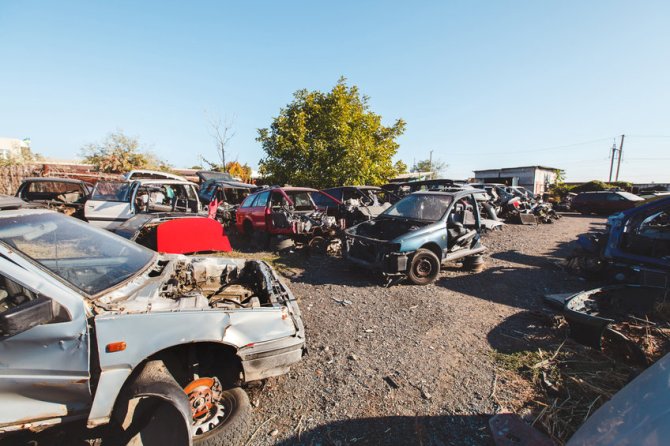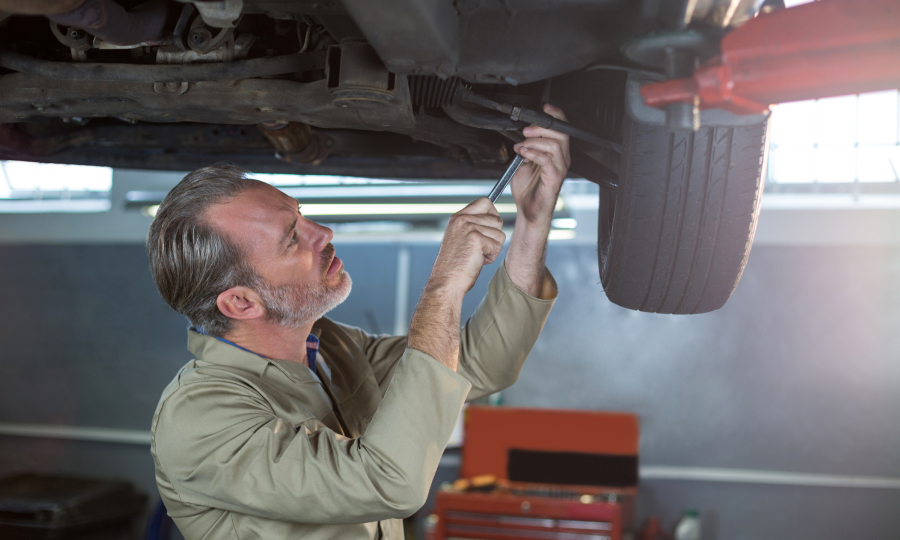The Art of Auto Salvage: How Wrecked Cars Are Repurposed for Good
In an age where sustainability is paramount, the auto salvage industry stands out as a beacon of resourcefulness. This industry specializes in the recovery and recycling of vehicles that have reached the end of their operational lives. While many view wrecked cars as nothing more than scrap metal, a closer look reveals a world where these vehicles are transformed into valuable resources. The process of auto salvage not only helps reduce waste but also supports environmental preservation. This article explores the intricacies of auto salvage and how it plays a vital role in repurposing wrecked cars for the greater good.
Understanding Auto Salvage
Auto salvage involves the dismantling of damaged or wrecked vehicles to recover usable parts and materials. This practice has evolved significantly over the years, shifting from simple scrapping to a more sophisticated approach that emphasizes recycling and sustainability. Salvage yards, also known as junkyards, serve as the primary facilities for this process. They are equipped to handle the complexities of dismantling vehicles while adhering to safety and environmental regulations.
The auto salvage process begins with the acquisition of wrecked cars, often through insurance companies or direct sales from vehicle owners. Once a vehicle arrives at a salvage yard, it undergoes an initial assessment to determine which parts can be reused or recycled. Components such as engines, transmissions, and body panels can often be salvaged, cleaned, and resold. This not only provides an economical option for car repairs but also minimizes the need for new parts, ultimately reducing the environmental impact associated with manufacturing.
The Environmental Impact of Auto Salvage
The environmental benefits of auto salvage are significant. Each year, millions of vehicles are taken off the road, contributing to a substantial amount of waste. However, through the salvage process, many of these vehicles can be repurposed rather than sent to landfills. Auto salvage yards recycle a variety of materials, including metals, plastics, and glass, which can be reused in the production of new products.
Recycling metal from wrecked cars is particularly beneficial. Steel and aluminum, common materials used in vehicle construction, require vast amounts of energy to produce from raw ores. By recycling these metals, the auto salvage industry reduces the need for new mining operations, conserving natural resources and lowering greenhouse gas emissions. Furthermore, many salvage yards employ eco-friendly practices, such as properly disposing of hazardous materials like oil, batteries, and fluids, which could otherwise harm the environment if released.
Economic Benefits of Auto Salvage
Beyond its environmental impact, the auto salvage industry also provides substantial economic benefits. The sale of salvaged parts allows consumers to save money on repairs, making vehicle maintenance more accessible. Many car owners prefer to purchase used parts from salvage yards instead of new ones, as this can significantly lower their repair costs.
Moreover, the auto salvage industry creates numerous jobs, ranging from technicians who dismantle vehicles to sales staff who assist customers in finding the right parts. These jobs contribute to local economies and support communities by providing employment opportunities. The economic cycle continues as salvaged parts find their way back into the market, often resulting in lower prices for consumers and increased sales for repair shops that rely on affordable parts.
Repurposing Vehicles for Creative Uses
In addition to recycling parts, many auto salvage yards have begun exploring innovative ways to repurpose entire vehicles. Wrecked cars can be transformed into unique pieces of art, furniture, or functional items. Artists and craftsmen often source materials from salvage yards to create everything from sculptures to home decor.
This creative approach to repurposing not only reduces waste but also raises awareness about the potential of wrecked cars. By showcasing the artistic possibilities of salvaged materials, individuals and organizations can inspire others to rethink how they view waste and consumption. Some salvage yards even host workshops and community events, encouraging local residents to engage with the idea of recycling and sustainability in a hands-on manner.
The Role of Technology in Auto Salvage
Technology has played a crucial role in modernizing the auto salvage industry. Advanced inventory management systems allow salvage yards to keep track of parts more efficiently, making it easier for customers to find what they need. This efficiency is especially important in services such as damaged car removals in Sydney, where quick access to parts can enhance the overall process. Online platforms have also emerged, enabling buyers to search for and purchase salvaged parts from the comfort of their homes.
Furthermore, technological advancements in dismantling equipment have improved safety and efficiency in salvage operations. Automated systems can streamline the dismantling process, allowing for quicker turnaround times and minimizing the risk of injury to workers. As technology continues to evolve, the auto salvage industry will likely see even greater enhancements that improve sustainability and resource recovery.
Also Visit:https://totalcarremoval.com.au/car-removal-in-blacktown/
Future Trends in Auto Salvage
As society increasingly prioritizes sustainability, the auto salvage industry is poised for growth. Consumer demand for environmentally friendly practices is driving automakers to consider recycling as an integral part of their operations. Many manufacturers are now designing vehicles with end-of-life recyclability in mind, ensuring that components can be easily removed and repurposed when the vehicle is no longer operational.
Additionally, the rise of electric and hybrid vehicles introduces new challenges and opportunities for the automotive salvage industry. These vehicles contain advanced materials and components that require specialized knowledge for dismantling and recycling. As the number of electric vehicles on the road continues to grow, salvage yards will need to adapt their practices to handle these new technologies effectively.
Conclusion
The art of auto salvage represents a critical intersection of sustainability, creativity, and economic viability. Through the process of dismantling and repurposing wrecked cars, the industry significantly reduces waste and conserves valuable resources. The benefits extend beyond environmental impact, as auto salvage contributes to local economies and inspires creative innovation. As society continues to embrace sustainable practices, the auto salvage industry will play an increasingly vital role in shaping a greener future. By recognizing the potential of wrecked cars, individuals and businesses can work together to create a more sustainable and resourceful world.
Browse through our other informative posts.














Post Comment